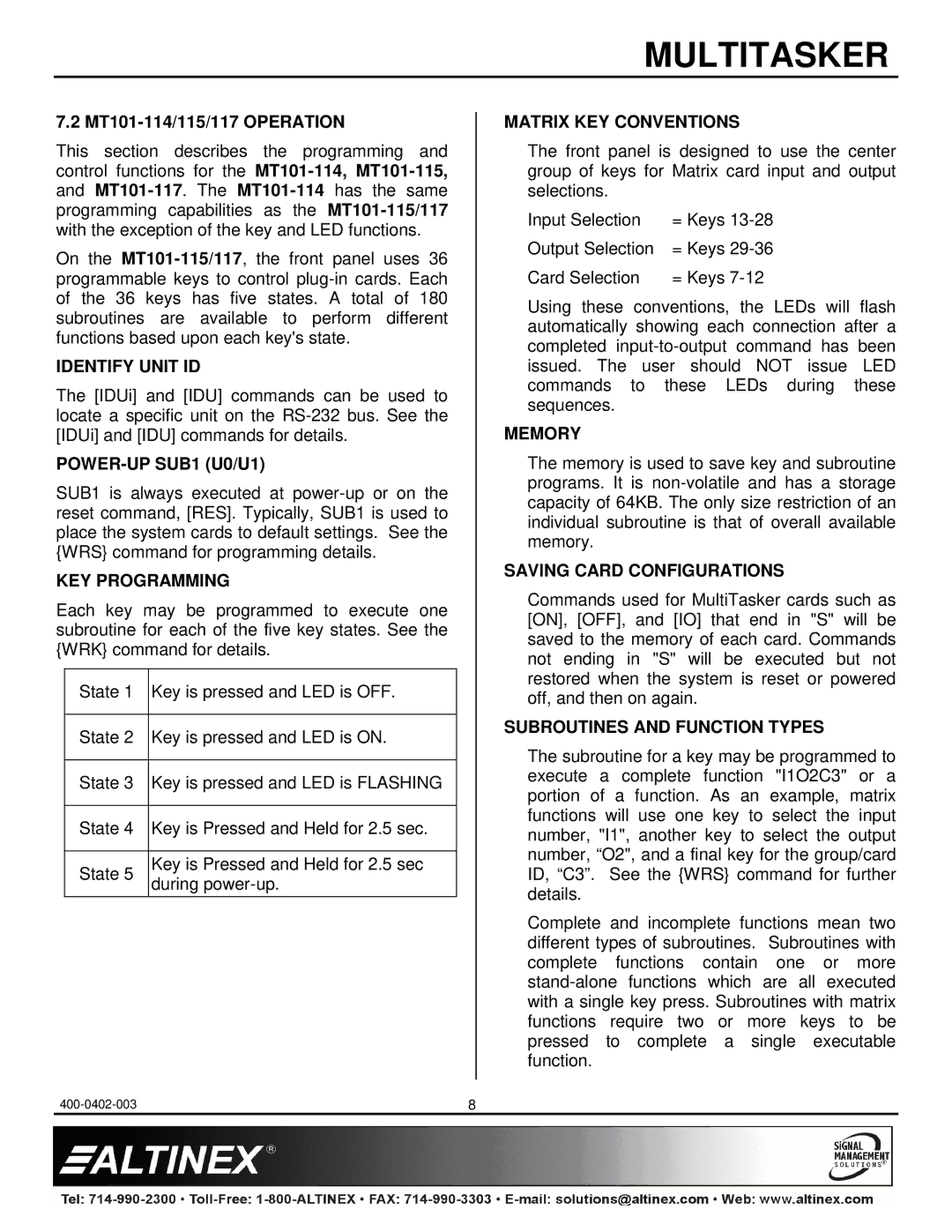
MULTITASKER
7.2 MT101-114/115/117 OPERATION
This section describes the programming and control functions for the
On the
IDENTIFY UNIT ID
The [IDUi] and [IDU] commands can be used to locate a specific unit on the
POWER-UP SUB1 (U0/U1)
SUB1 is always executed at
KEY PROGRAMMING
Each key may be programmed to execute one subroutine for each of the five key states. See the {WRK} command for details.
State 1 | Key is pressed and LED is OFF. | |
|
| |
State 2 | Key is pressed and LED is ON. | |
|
| |
State 3 | Key is pressed and LED is FLASHING | |
|
| |
State 4 | Key is Pressed and Held for 2.5 sec. | |
|
| |
State 5 | Key is Pressed and Held for 2.5 sec | |
during | ||
|
MATRIX KEY CONVENTIONS
The front panel is designed to use the center group of keys for Matrix card input and output selections.
Input Selection | = Keys |
Output Selection | = Keys |
Card Selection | = Keys |
Using these conventions, the LEDs will flash automatically showing each connection after a completed
MEMORY
The memory is used to save key and subroutine programs. It is
SAVING CARD CONFIGURATIONS
Commands used for MultiTasker cards such as [ON], [OFF], and [IO] that end in "S" will be saved to the memory of each card. Commands not ending in "S" will be executed but not restored when the system is reset or powered off, and then on again.
SUBROUTINES AND FUNCTION TYPES
The subroutine for a key may be programmed to execute a complete function "I1O2C3" or a portion of a function. As an example, matrix functions will use one key to select the input number, "I1", another key to select the output number, “O2", and a final key for the group/card ID, “C3”. See the {WRS} command for further details.
Complete and incomplete functions mean two different types of subroutines. Subroutines with complete functions contain one or more
8 |
